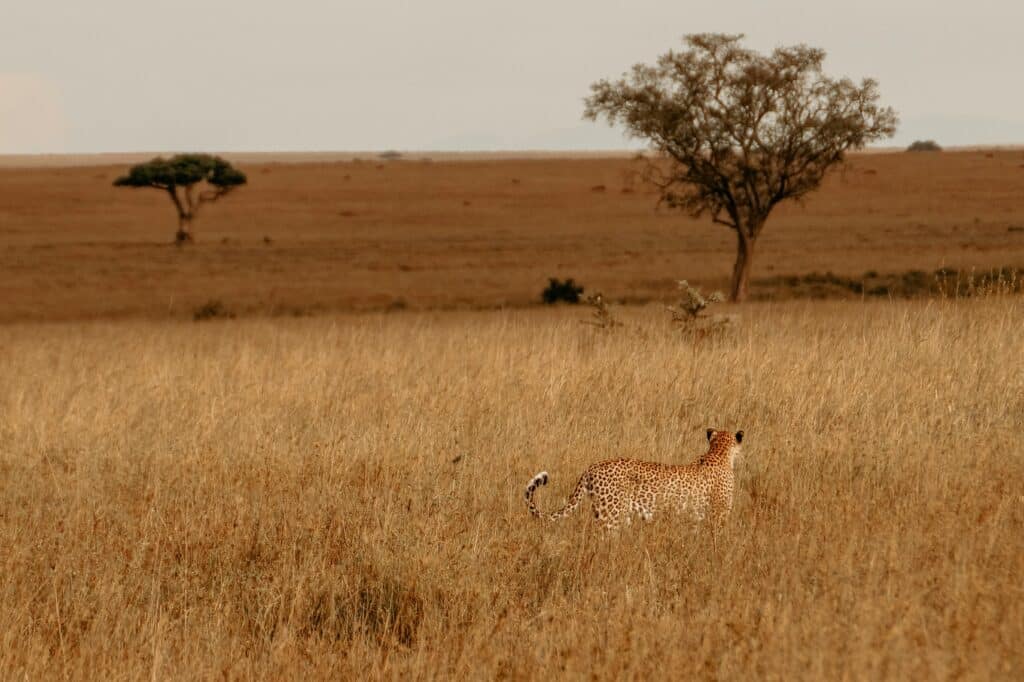
How Many Animals Live In Serengeti?
The Serengeti is one of the most famous and biodiverse ecosystems on the planet. Located primarily in Tanzania, this sprawling savanna is home to an extraordinary variety of wildlife. But just how many animals call the Serengeti home? The answer reveals the richness of this natural wonder, with a complex ecosystem supporting millions of individual creatures across thousands of species.
1. Over 2 Million Large Mammals
The Serengeti is most famous for its large mammals, particularly the incredible population of wildebeests, zebras, and gazelles that make up the bulk of the Great Migration. Each year, around 1.5 million wildebeests, accompanied by approximately 200,000 zebras and 400,000 Thomson’s gazelles, embark on their epic journey in search of food and water. This annual migration, covering about 1,200 miles, is one of the most dramatic and awe-inspiring spectacles of the animal kingdom.
In addition to these migratory species, the Serengeti is also home to large populations of resident mammals. There are about 3,000 lions, making it one of the most significant lion strongholds in Africa. Elephants, buffaloes, giraffes, and hippos also contribute to the diversity of large animals living in the Serengeti.
2. Hundreds of Species of Mammals
Beyond the headline-grabbing numbers of wildebeests and zebras, the Serengeti supports over 70 different species of large mammals. These include the so-called “Big Five” — lions, leopards, elephants, buffaloes, and rhinos — which are high on the list for most visitors on safari. Other key species include:
- Cheetahs: About 1,000 cheetahs roam the Serengeti, making it one of the best places in the world to see these fast predators.
- Leopards: Although difficult to spot due to their elusive nature, leopards thrive in the Serengeti’s woodlands and savannas.
- Hyenas: Spotted hyenas are another common predator, with large clans often seen around carcasses during the migration.
- Rhinos: Although rare, black rhinos are present in the Serengeti, particularly in protected areas like the Ngorongoro Conservation Area.
3. Birdlife
While mammals steal most of the attention, the Serengeti is also a paradise for birdwatchers. Over 500 bird species have been recorded in the region, making it one of the richest avian habitats in Africa. From large birds of prey such as vultures and eagles to smaller species like weavers and finches, the variety is staggering. Some of the more iconic birds include:
- Secretary birds: These striking, long-legged birds are often seen stalking the savanna, hunting snakes and small mammals.
- Ostriches: The world’s largest bird, the ostrich, is commonly found roaming the plains.
- Crowned cranes: These elegant birds are a symbol of Tanzania and can be found near water sources.
4. Reptiles and Amphibians
The Serengeti also supports a variety of reptiles and amphibians. While they are less visible compared to the mammals and birds, they play an important role in the ecosystem. Crocodiles, particularly in the Grumeti and Mara rivers, are among the most famous reptiles in the area. These enormous predators can reach lengths of up to 20 feet and are a significant threat to migrating animals during river crossings. Other reptiles include:
- Lizards: Various species of lizards, including the colorful Agama lizard, are commonly seen in the Serengeti.
- Snakes: The Serengeti is home to numerous snake species, such as the black mamba, puff adder, and African rock python, though they are rarely seen by visitors.
5. Insects and Invertebrates
While often overlooked, the Serengeti is also teeming with insects and other invertebrates. These creatures play crucial roles in the ecosystem, from pollinating plants to serving as a food source for many birds and reptiles. Ants, termites, butterflies, and beetles are just a few of the many invertebrates that can be found in the Serengeti. Perhaps the most famous insect in the Serengeti is the tsetse fly, which can carry diseases affecting both animals and humans.
6. Ecosystem Balance
The vast number of animals in the Serengeti is a testament to the delicate balance of its ecosystem. Predators like lions, leopards, and crocodiles keep herbivore populations in check, while scavengers like hyenas and vultures clean up the remains of carcasses, preventing the spread of disease. The plant life, including grasses and acacia trees, forms the base of the food chain, sustaining the millions of herbivores that roam the plains.
From the millions of wildebeests and zebras that migrate each year to the hundreds of bird species and reptiles that inhabit the plains and rivers, the Serengeti is home to an astounding array of wildlife. Its unique ecosystem supports a staggering number of animals, making it one of the most vibrant and dynamic natural environments on Earth. Whether you’re visiting for the Great Migration or simply exploring the breathtaking landscapes, the Serengeti offers an unforgettable glimpse into the world of wildlife.

